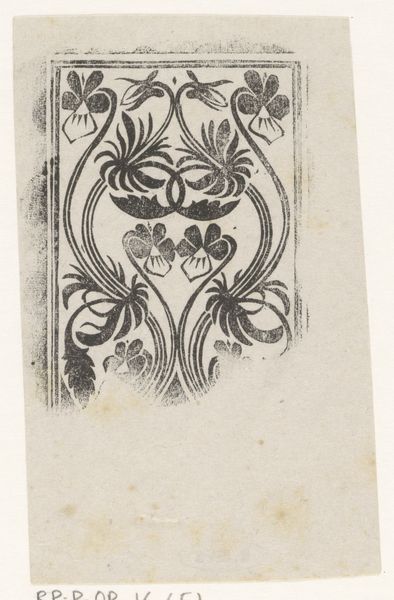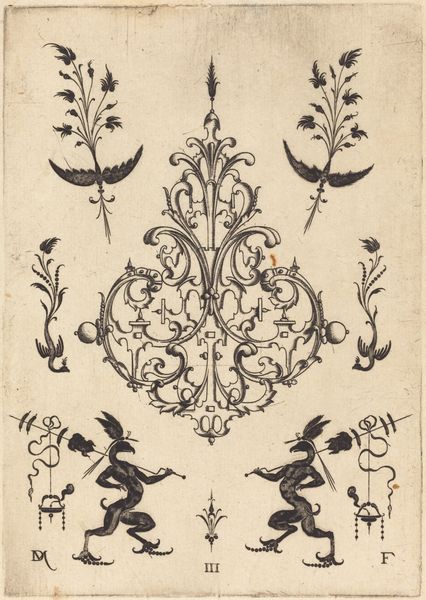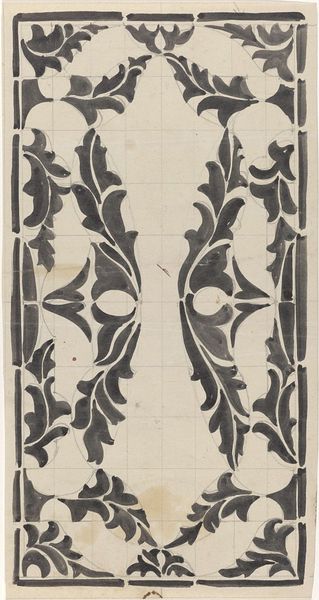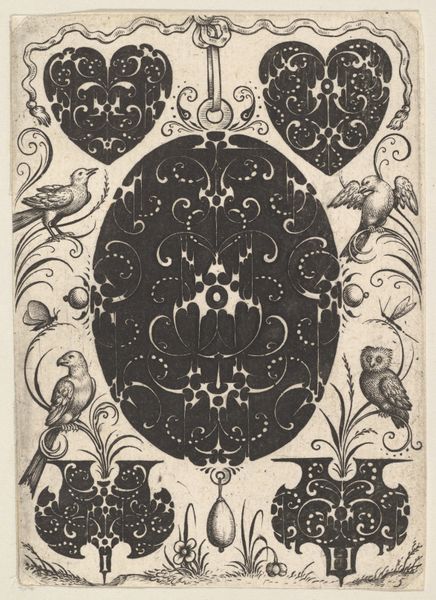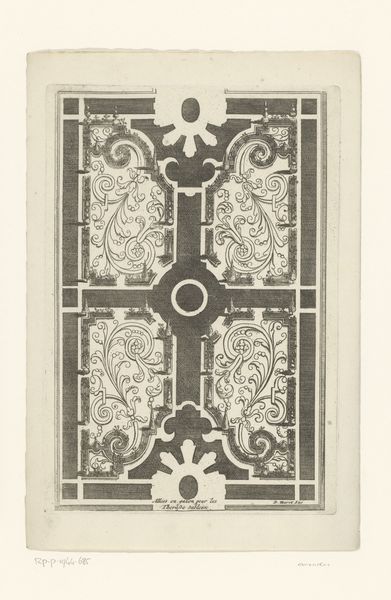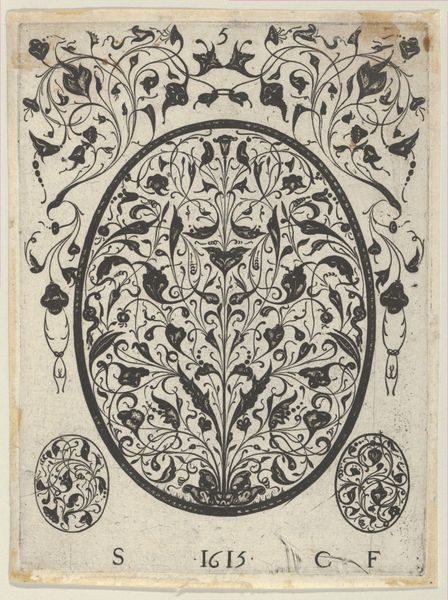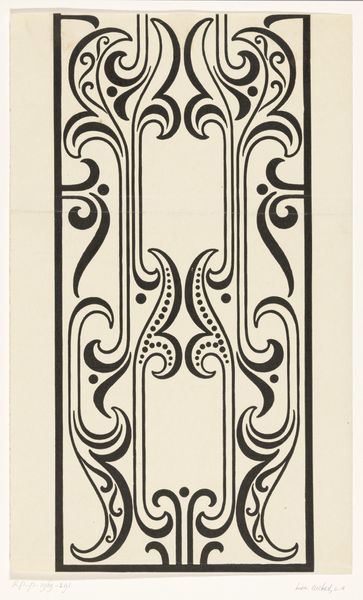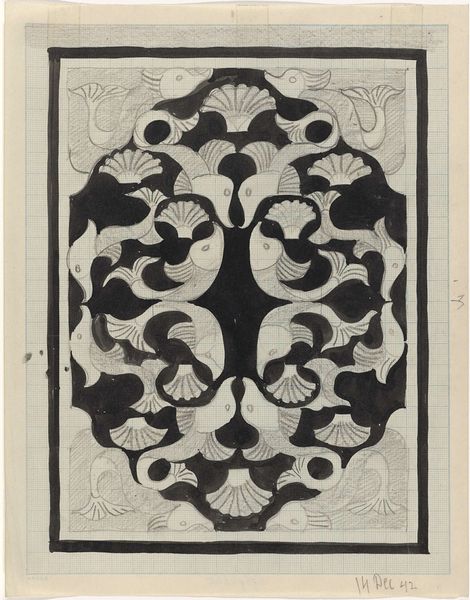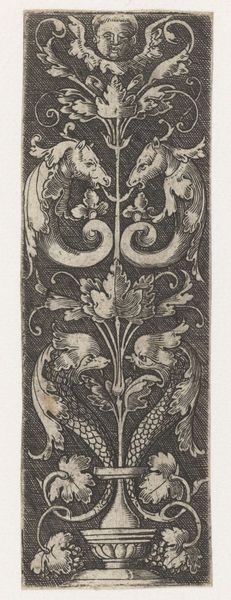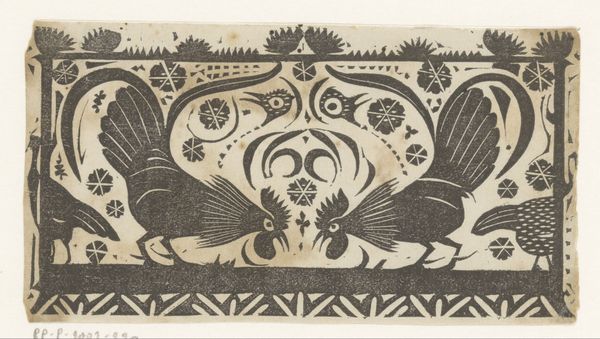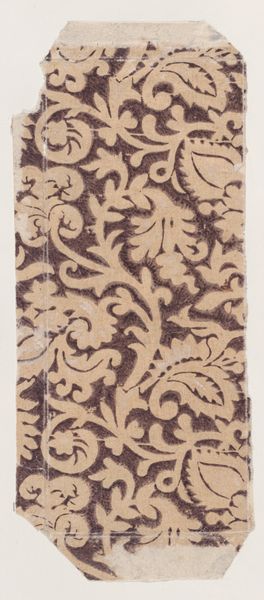
print, linocut
#
organic
#
art-nouveau
# print
#
linocut
#
linocut print
#
organic pattern
#
decorative-art
Dimensions: height 191 mm, width 70 mm
Copyright: Rijks Museum: Open Domain
Editor: Here we have Gerrit Willem Dijsselhof's "Vignet met bosviolen," a linocut print made sometime between 1876 and 1924. It’s incredibly ornamental. What's interesting to me is how contained the wildness of the organic pattern feels within the border. What do you make of it? Curator: It's fascinating to consider this piece within the broader context of the Art Nouveau movement. Dijsselhof and his contemporaries sought to elevate craft and design to the level of fine art. What role do you think institutions like the Rijksmuseum play in validating this kind of decorative art? Editor: That's a great point! By exhibiting this piece, the museum seems to be saying that design objects can be just as important as paintings or sculptures. Do you see a kind of social statement in elevating what might have been considered a "lesser" art form? Curator: Precisely! The Art Nouveau artists were responding to the industrial revolution, critiquing mass production and advocating for unique, handcrafted items. Linocuts like this offered a way to produce multiples, while retaining an element of the artist's hand. How does the repetitive pattern in this print engage with those themes? Editor: I suppose it shows how you can bring artistic individuality into a format suitable for wider circulation. But the limited colours also make me think that it’s also about a desire for simplicity and essential forms. It's definitely much more accessible than owning an original painting. Curator: Exactly. The linocut as a medium speaks to this idea of democratization of art. Museums displaying this, acknowledge the value of art beyond the purely aesthetic, incorporating its social and economic implications as well. Editor: It's amazing to think about how a simple print can reflect so much about the society it came from. This really shows how design and fine art have a far closer relationship than one might expect! Curator: Indeed! Understanding the historical context really enriches our experience of even seemingly simple artworks like this one.
Comments
No comments
Be the first to comment and join the conversation on the ultimate creative platform.
